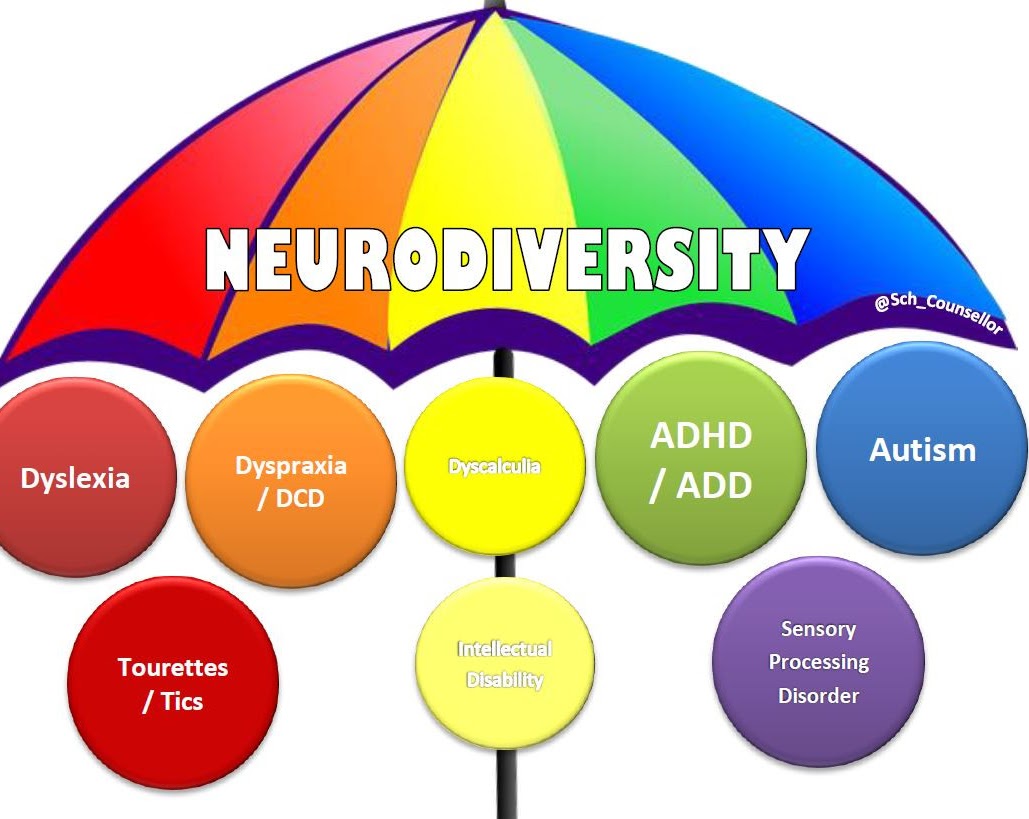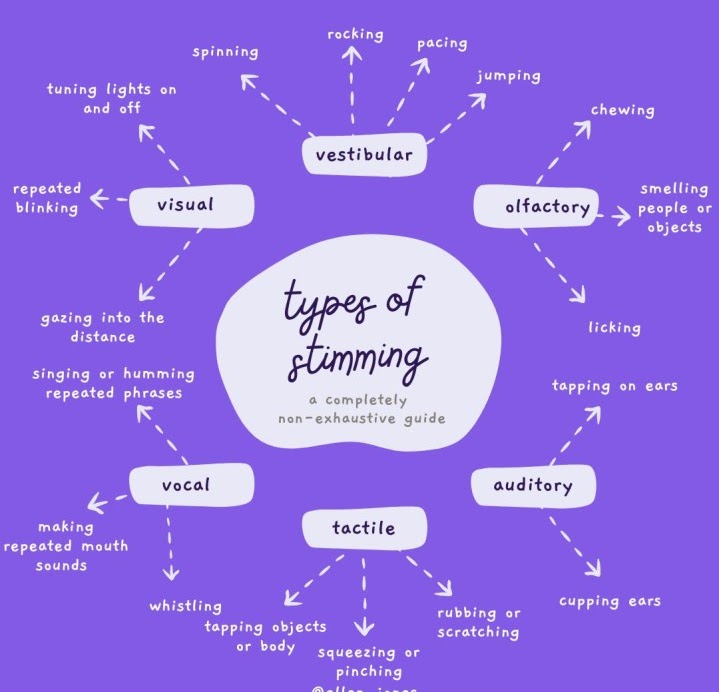General Terminology
Neurodiversity
Neurodiversity is the concept that variations in brain function and behavior are normal and natural aspects of human diversity. People fundamentally experience and interact with the world in different ways to varying degrees and there is no single, "correct" way of thinking, learning, and behaving. There are neurological differences that can negatively impact a person's ability to navigate the world we live in. As we understand more about how people's experience differ, we can adapt our actions and our world to make sure every person's experience is accounted for. The term was coined in the 1990s by Australian sociologist Judy Singer.
Neurotypical
Refers to an individual who thinks, perceives, and behaves in ways that are statistically and/or socially considered the norm by the general population.
Neurodivergent
Refers to an individual whose brain works in a way that isn’t expected or isn’t considered to be the norm; the individual functions differently in terms of learning, social interaction, and communication. While it's technically incorrect to refer to an individual as "neurodiverse", very few people will be offended or even aware of the distinction. It’s a very common mix-up, and the intended meaning is usually clear.
Neurodiverse
Refers to a group that includes individuals with different neurological makeups. For example, a workplace with people who are both neurotypical and neurodivergent is neurodiverse. The term emphasizes diversity within the group, not an individual.
Disability
In the context of neurodiversity, a disability refers to a condition where differences in neurological function result in challenges or barriers that significantly impact one’s ability to perform certain tasks or engage with the world in a way that society typically expects.
It's important to remember that not all neurodiverse traits are inherently "deficits"; many conditions that fall under the umbrella of neurodiversity are associated with certain heightened abilities. For example, many people diagnosed with autism perform exceptionally well in tasks that center around memory and pattern recognition. However, some traits become disabling in environments that are not accommodating or inclusive. This perspective aligns with the social model of disability, which views disability as arising partly from societal barriers rather than solely from an individual's condition. The good news is that the best way to address barriers like social isolation, stigma and misunderstanding is by educating ourselves about this aspect of human diversity, something that you're doing right now!
Language (Person First vs Disability First)
Identity First
Identity first language for neurodiversity emphasizes a person's difference as a fundamental part of who they are, and challenges the notion that being neurodivergent is negative or needs to be separated from their identity.
For example, identity first language addresses those with autism with the following language:
- "Autistic"
- "Autistic person"
Person First
Some people prefer this method of reference because it emphasizes that a person who is neurodivergent is first and most importantly, a person. This reduces the risk of defining people solely by their disability.
For example, person first language addresses those with autism with the following language:
- "Has autism"
- "Person with autism"
The language used to refer to neurodiverse populations—identity-first vs. person-first—is still a topic of ongoing discussion within neurodiversity advocacy groups. Different individuals, groups, and communities may prefer one over the other based on their personal experiences and the meanings they attach to the terms. If you find yourself referring to someone who is neurodivergent, it's best to ask them which language they prefer, as a small but meaningful way to demonstrate respect and understanding.
Neurodevelopmental Conditions
These are conditions that affect the development of the nervous system, including the brain, that can cause the body to exhibit growth differently from what may be expected in areas that facilitate communication, learning, and social interaction; this will cause the individual to have to seek out different learning and communication methods to support their growth.

Restricted Repetitive Behaviors
According to the National Library of Medicine, restricted repetitive behaviors (RRBs) can include an extensive category of behaviors, such as fixations on certain restricted patterns of interest, adherence to very specific routines, or repetitive movements. This varies from person to person, as does the severity of said behaviors.
Hyperfocus
The capacity to exclusively engage in one task or activity while tuning out others. It is a type of automatic attention: aka processes that occur faster with less effort.
Sensory Sensitivity
A biologically-based trait characterized by increased awareness and sensitivity to the environment. A highly sensitive person processes sensory stimuli and information more strongly and deeply than others. Many autistic individuals also experience this.
Children especially try to avoid sensory experiences – for example, they might cover their ears when they hear loud noises.
Special Interests
Described as an intense focus on specific topics. Many autistic people have passionate and highly focused interests, often from a fairly young age. These can change over time or be lifelong. They can be characters, music, books, animals, paintings, etc.

Stimming
"Stimming" refers to self-stimulating behaviors that involve repetitive movements, sounds, or actions. These behaviors are often ways for autistic individuals to manage sensory input, and express/regulate emotions.
Camouflaging/Masking
Masking is a coping mechanism used by some individuals to hide or suppress their neurodivergent traits to blend in socially. It can be conscious or unconscious but may cause individuals to lose their unique identity, leading to exhaustion, anxiety, and self-identity challenges.
Visible vs. Invisible
A key term that many people use as a distinction between different disabilities and different forms of neurodiversity is by categorizing them as "visible" or "invisible". It's very important to understand that some people deal with challenges we can't see.
Visible
Visible signs of neurodiversity are the traits that can be easily perceived by others. Common visible neurodiverse traits include stimming, restrictive repetitive behaviors, and noticeable social awkwardness.
For example, Tourette's syndrome is characterized with physical tics like shoulder shrugging, and repeated arm/hand movements, as well as vocal tics like repeating phrases and echoing others' words(echolalia). These traits are easier to notice.
Invisible
Invisible signs of neurodiversity are not immediately apparent to others and include sensory sensitivity, hyperfocus, and special interests.
Tourette's syndrome is also characterized with physical tics like, and, as well as vocal tics.